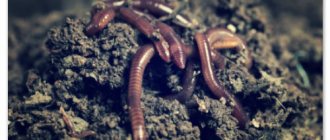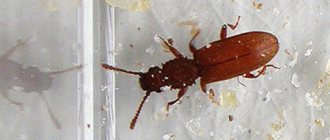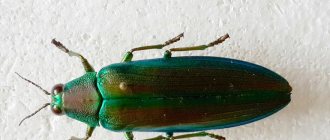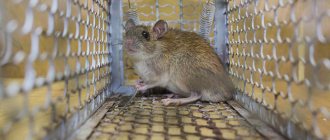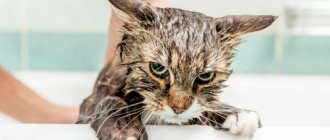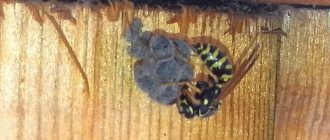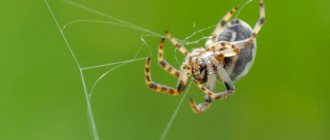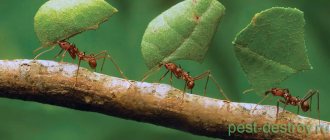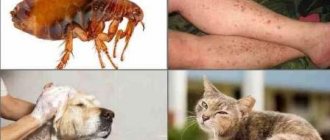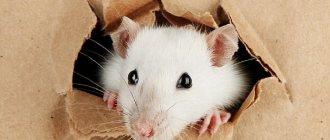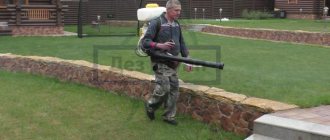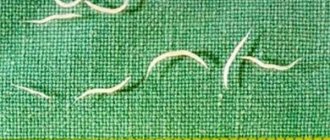The movement of the worm occurs due to contraction of the muscles of its body, while the length and thickness of its individual parts change.
The movements of all parts of the body consist in the fact that some parts of it lengthen and thin, or, on the contrary, shrink and thicken. As a result of such alternating actions, forward movement occurs. First, its front part stretches forward, and then its back. When the back of his body pulls up, his front begins to move forward. This is how the earthworm moves, which can be observed by placing one individual on a paper sheet. Let's take a closer look at what makes the earthworm move.
Appearance and features
Earthworms (Lumbricidae) belong to the order of oligochaete annelids. Their body consists of separate annular segments (segments), the number of which depends on the age and size of the worm. There can be 80-300 segments. Moreover, there are constrictions both outside and inside. The creature's shape is maintained by the internal pressure of the liquid that fills their body from the inside.
The ventral side is flatter and lighter, the dorsal side is convex and dark. The front end of the body (with the mouth) has a pointed shape, the rear end (with the anus) is wider and blunt. Approximately in the middle, the worm's body is divided by a protruding belt, which is involved in the reproduction process.
Appearance
The size of earthworms living in Russia is 10-30 cm, sometimes larger. In Australia there live worms up to 1 m long, and in South America there are giants up to 2 m and 2.5 cm in diameter.
On a note! Earthworms are hermaphrodites, meaning they have both male and female reproductive cells.
The body of these invertebrates is covered with mucus, which at the same time:
- protects skin from drying out;
- facilitates movement in the substrate, providing gliding.
During the cold season, invertebrates move into the deeper layers of the soil, and life processes slow down and stop (diapause). Little is known about the lifespan of these creatures. There is evidence that worms live on average 5 years, but no more than 10 years.
Circulatory system
The circulatory system of earthworms consists of two longitudinal vessels - abdominal and dorsal, as well as branches connecting them. Due to muscle contraction of the walls, blood moves throughout the body. The blood of earthworms is scarlet. With its help, communication is established between internal organs, and metabolism is also carried out. As the blood circulates, it carries nutritional compounds from the digestive organs, as well as oxygen coming from the skin. At the same time, carbon dioxide is removed from the tissues. In addition, the blood removes unnecessary and harmful compounds to the excretory organs.
Habitat
Earthworms live on all continents, with the exception of Antarctica, almost everywhere except deserts. In the soil of many areas of the Earth, the population of earthworms has grown significantly when people began to actively engage in agriculture there. For example, planting plants unusual for the region, in the root system of which there were already representatives of the species.
Worms breathe through the entire surface of their skin, so they prefer moist soils rich in humus (semi-decomposed plant debris). In too wet (swampy) areas there is little oxygen in the soil, and breathing is difficult. In dry, sandy soil, the mucus dries out and the worm may die.
Interesting! When it rains, worms tend to crawl to the surface because it becomes difficult to breathe in the soil. That is why, after a rainstorm, they can be seen in huge quantities on garden paths, on lawns and flower beds in parks.
Comments (2)
Nikita
11.11.2017 at 12:45 |
A very interesting article, I of course knew that they perform some function, but why and why I learned from here, I also heard that some gardeners buy foreign worms for greater soil fertility!Answer
Yulia Expert Plodogorod
10/31/2019 at 11:27 pm |
Hello, Nikita! You are absolutely right, earthworms are very useful in open ground conditions. They restore even very depleted soil and clean it of chemicals. They are sometimes deliberately added to containers where compost is being prepared. This makes it possible to speed up the process and improve the quality of the resulting fertilizer.
We would like to note that when purchasing these creatures, it is important to make sure that the conditions are suitable for their normal functioning. Of course, worms of this type are highly adaptable, but they will be more effective under conditions of optimal temperature and other factors.
Also, you need to be careful about introducing creatures into your area that are not part of the natural ecosystem that is typical for a particular region. The fact is that without maintaining balance with the help of natural antagonists, species multiply intensively and uncontrollably. In the future, this may lead to overpopulation and destructive processes.
If there are too many earthworms, they will dig more intensively in search of food. This can harm plants, especially young ones that do not have a strong root system.
Answer
How do earthworms move?
The movement of the worm occurs in several stages and is associated with the structure of its muscular system. If you try to catch a worm that has sunk into the ground with its head end, the back half will remain in your hands, since the body will tear apart at the waist. Earthworms are able to go 80-100 cm deep into the soil.
Interesting! The severed back part of the worm usually grows back.
The role of bristles
On each segment of the animal’s body there are from 4 to 8 bristles - small thin outgrowths. They are placed at an angle towards the back half of the body. The worm moves in the ground like a spring. The pointed head end stretches, becomes thinner, and pushes the soil apart. At the same time, the bristles stand apart and hold the body. Then the back half is pulled towards the front.
The role of the longitudinal and oblongata muscles
The peculiarities of the movement of an earthworm in the soil are determined by the structure of its muscular system. Under the skin there are two layers of muscles:
- circular (ring);
- longitudinal.
Together they form a fused musculocutaneous sac (worm shell).
Rings
The longitudinal muscles are responsible for stretching the body, while the torso becomes elongated and thin. Ring - for reduction. At the same time, the body thickens and the segment shortens.
Reproduction
Earthworms reproduce sexually, although in general protostomes are hermaphrodites. Each member of Haplotaxida has male organs called testes (which produce sperm) and female organs called ovaries (which produce eggs). The earthworm lays its eggs in a slimy cocoon. It is formed from a substance that is released through the belt. Next, the cocoon in the form of a muff slides off the body and is pulled together at the ends. It remains in the ground until the young worms emerge from it. The cocoon serves to protect eggs from dampness and other unfavorable influences.
Moving on hard ground
In dense soil, the worm also moves with the help of muscles and bristles. At the same time, he swallows the earth with his mouth. Soil particles move through the animal's intestinal tract and nutrients are absorbed from it. Earthworms are detritivores.
Worms have no teeth. The throat sucks in the earth like an enema. The processed soil is pushed out of the anus. On the surface of the earth, on garden and park paths, you can see chains of small balls - coprolites - this is the waste of the worm's digestion. Moreover, in one day one earthworm is able to pass through its insides an amount of soil equal to its weight.
Important! Earthworms are the most important humus-forming creatures on Earth. During the digestion process, compounds of humic acids with inorganic substances (phosphorus, nitrogen, potassium) with low acidity are obtained. Thus, they saturate the soil with substances necessary for the growth and development of plants.
Before feeding live waste to worms:
Such as cleaning from
- cabbage
- potatoes
- carrots
- celery
- radishes
- radishes
- beets
- and so on.
In winter, you can save energy by freezing it all on the balcony. Now about the bones, such hard material for food in general is absolutely unthinkable, since our worms will never chew them without dentures. In order to feed it to the worms, you need to grind any bones
- apricot
- avocado
- cherry
- mango
- meat
- olive
- nuts
- peach
- fish
- plum
- date
- pistachios
- cherry
- eggshell
- etc.
All of them are quite hard, but in a ground state they are excellent as food for worms to grind food faster, as all birds do, which swallow small pebbles for this purpose. However, at home you can foolishly break something - in the sense of a blender, mixer or electric meat grinder. If you try to grind all the above listed bones, hard roots and branches of plants in expensive kitchen devices. Therefore, we collect such food separately and burn it in the fireplace at the dacha. But ash, chalk and sand in unlimited quantities are perfect for feeding our “suckers” not only for grinding food, but also for deoxidizing it. In a box vermifactory, at least half of the feeding should be wet waste paper. The second half includes all kitchen vegetable or fruit peelings, as well as water after washing off the remains of any food from the dishes. What do all the worms especially love? To further improve the appetite and love of sexually mature individuals of the “Angels of the Earth”, aphrodisiacs are highly desirable:
- coffee grounds
- tea leaves
- spoiled jam
- sweet remains of flour and confectionery products
- various meat scraps
- fish waste
- greasy napkins for wiping pans and pans
- our feces
- droppings and manure of all domestic animals and birds
Sources
- https://www.syl.ru/article/332655/chem-pitayutsya-dojdevyie-chervi-v-prirode
- https://TaraKlop.ru/chervi/dozhdevoj-cherv/
- https://faunistics.com/dozhdevoj-cherv/
- https://wildfauna.ru/dozhdevoj-cherv
- https://farm-worm.com/znachenie-chervej/
- https://travart.ru/dozhdevye-chervi
- https://zverila.ru/dikie-zhivotnye/vidy-dozhdevyh-chervej-i-sreda-ih-obitaniya.html
- https://zen.yandex.ru/media/rmnt/organicheskoe-zemledelie-dojdevye-chervi–osnovnoi-indikator-plodorodiia-5b713c39926e3100a8d6293d
- https://vermitechnologii.ru/chem-kormit-dozhdevyih-chervey/
Business relevance
Breeding worms at home can hardly be called a popular type of business. But the low barrier to entry, ease of cultivation and care, as well as the availability of various sales sources indicate the prospects of organizing a vermifarm (a place where worms are grown). You can make money by breeding worms at home in various ways of organizing a business:
- Sales through our own retail fishing outlets. Not every fisherman likes to pick in the ground in search of earthworms, and besides, today it is not so easy to find enough of them. Many people simply purchase bait at special points. One individual today costs 1-3 rubles, and for full-fledged fishing you need at least 30 worms.
- Sales to poultry and fish farms, pet stores for feeding. For fish and birds, live food must be present in the diet. Earthworms have great nutritional value. Therefore, farmers, for example, those who breed Indian ducks at home, constantly purchase worms as food, moreover, you can negotiate with them on periodic deliveries.
- Sale of breeding stock for those who want to breed worms at home.
- Production of vermicompost, which can be obtained as a result of the vital activity of worms. Vermicompost is a valuable organic fertilizer, the best nutrition for any plants. Buying vermicompost is interesting for both ordinary summer residents and large landowners, farmers, and those who are looking for profitable business ideas with small investments. Vermicompost can be collected every 4-6 weeks.
- Sales to pharmaceutical companies for the production of medicines.
- Production and sale of vermicelli. Worm tea (vermic tea) is a product of the vital activity of worms and is a unique highly concentrated biohumate. Increases crop yields and has a protective effect on them.
Benefit
When we see a blooming garden, we understand that to some extent it is thanks to earthworms that enrich the soil with nutrients. These creatures process organic matter in the soil, turning it into nutrients that are easily absorbed by plants.
When earthworms dig, they plow the soil at the same time, which allows roots to grow, allowing for healthy plant growth. Tilled soil absorbs water and holds it inside. In addition, air circulates better in such soil. The movements of earthworms bring nutrients found deep in the soil to the surface. Nutrients enter the upper layers of the soil, where they are easier for plants to absorb.
In addition to the benefits that earthworms bring to plants, they also serve as food for birds. In early spring, birds fly to gardens precisely in search of worms, because at this time of year there are still no fruits or seeds that could serve as food for them. If an earthworm is placed in a container that does not allow light to penetrate, it will live in it for about two weeks, provided that peat moss is first placed in the container.
Gardeners can help earthworms thrive by adding organic matter to the soil. When the organic content of the soil decreases, earthworms go in search of other soil with more favorable conditions, otherwise they will simply die. Proteins from the remains of worms are converted into nitrogen and feed plants. However, this benefit is very short-lived.
The death of earthworms implies a deterioration in the condition of the garden, such an important role they play in nourishing the soil.
Sources
- https://nasotke.pro/sad/dozhdevoj-chervhttps://www.zoolog.com.ua/ru/naiprost48.htmlhttps://doklad-referat.ru/%D0%94%D0%BE%D0%B6 %D0%B4%D0%B5%D0%B2%D0%BE%D0%B9_%D1%87%D0%B5%D1%80%D0%B2%D1%8C_(%D1%85%D0%B0% D1%80%D0%B0%D0%BA%D1%82%D0%B5%D1%80%D0%B8%D1%81%D1%82%D0%B8%D0%BA%D0%B0_%D0% B8_%D1%81%D1%82%D1%80%D0%BE%D0%B5%D0%BD%D0%B8%D0%B5)https://givnost.ru/dozhdevoj-cherv-obraz-zhizni- i-sreda-obitaniya-dozhdevogo-chervya/https://www.botanichka.ru/article/earthworm/
